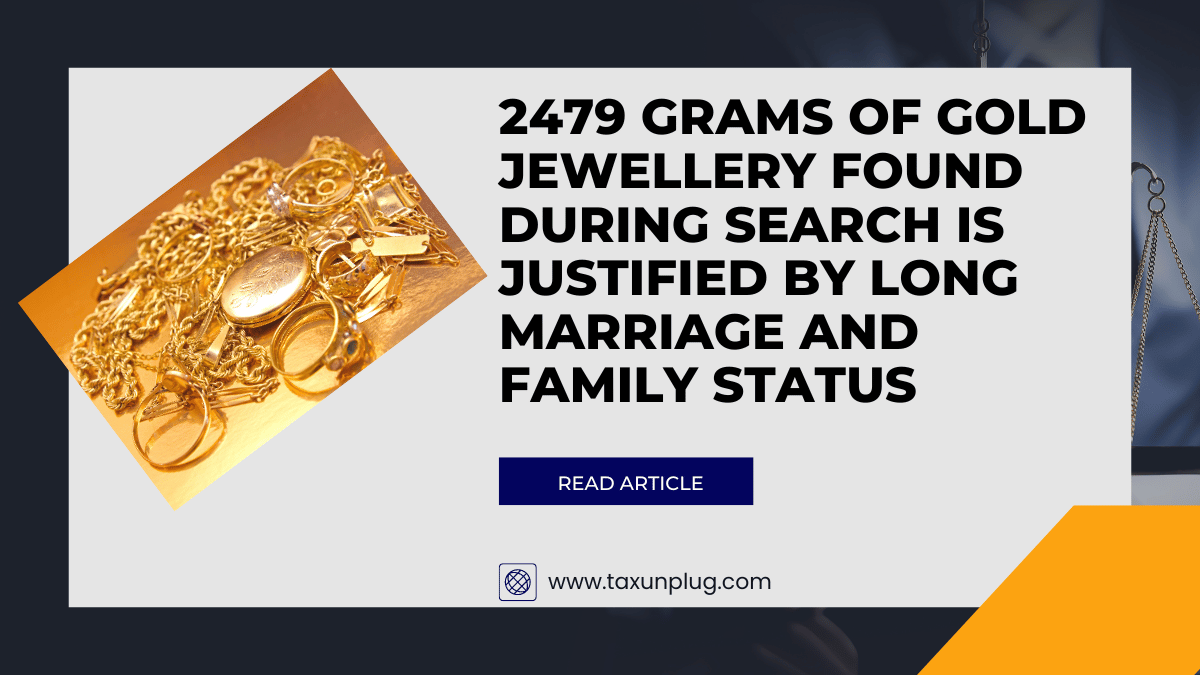2479 grams of gold jewellery found during search
Kirti Singh Vs ACIT [ITA No. 977 & 1067/DEL/2023] (ITAT Delhi)
The Hon’ble ITAT deleted the addition of unexplained jewellery, wherein it held that where the status of the family and customs and practices of the community to which family belongs, it permits an assessee to hold larger quantity of jewellery and ornaments out of the purview of seizure.
A search and seizure operation was conducted on 27th November, 2020, at the premises of M/s. Shiv Shakti Construction, where the appellant was also present. The total value of the jewellery found at her residence and in a locker was Rs. 93,18,090, with a gross weight of 2479.20 grams.
Based on the CBDT Instruction No. 1916 dated 11.05.1994, the Assessing Officer (AO) accepted 1300 grams of jewellery as belonging to several family members, including Kirti Singh, her husband, mother-in-law, and sons. The 1179.10 grams of jewellery that remained, however, was deemed unexplained. The Commissioner of Income Tax (Appeals) (CIT(A) denied Kirti Singh’s appeal and maintained the AO’s ruling.
The Appellant subsequently filed an appeal with ITAT. The essence of her argument was that the AO had overlooked the traditional traditions and conventions prevalent in Indian society, where women frequently store their jewellery at their mother house for a variety of reasons. Furthermore, she claimed that her rich status, as well as her community’s beliefs and habits, allowed her to own more jewellery than the CBDT guideline allowed. The ITAT assessed the evidence and determined the appellant’s claims to be plausible. It stated that the family’s great net worth, as evidenced by their significant revenues over the years, justified the holding of the excess jewellery discovered during the search.
The Tribunal also referred to the CBDT guidelines, which permits the exclusion of a greater amount of jewellery from search and seizure in accordance with the family’s position and the regional customs.
In addition, the ITAT referenced earlier rulings, such as one from the Delhi High Court, which acknowledged that accumulating jewellery over the course of a lengthy marriage is typical. It stressed that adding more jewellery than what the instruction says is acceptable should not be viewed as unusual, particularly when there isn’t any convincing proof of tax fraud.
Considering these factors into account, the ITAT allowed the appellant’s appeal and ordered the Assessing Officer to remove the additions made in relation to the unexplained jewellery under Section 69A of the Income Tax Act. The case emphasized how crucial it is to consider the taxpayer’s financial situation in addition to cultural and social standards when determining the validity of assets like jewellery.
To download order, click here.
“The site is for information purposes only and does not provide legal advice of any sort. Viewing this site, receipt of information contained on this site, or the transmission of information from or to this site does not constitute an attorney-client relationship.
The information on this site is not intended to be a substitute for professional advice.”

